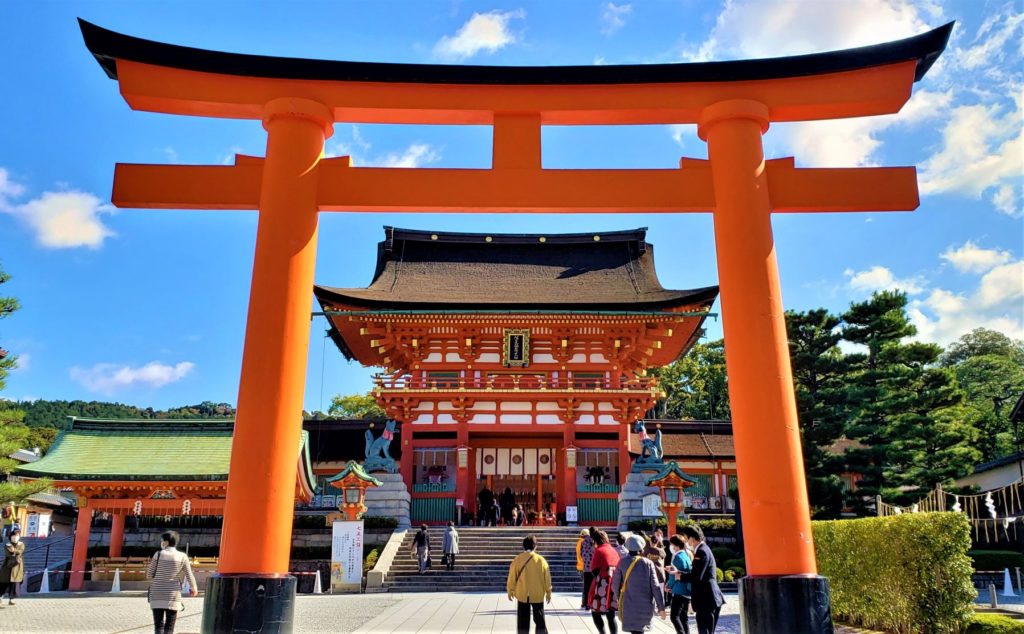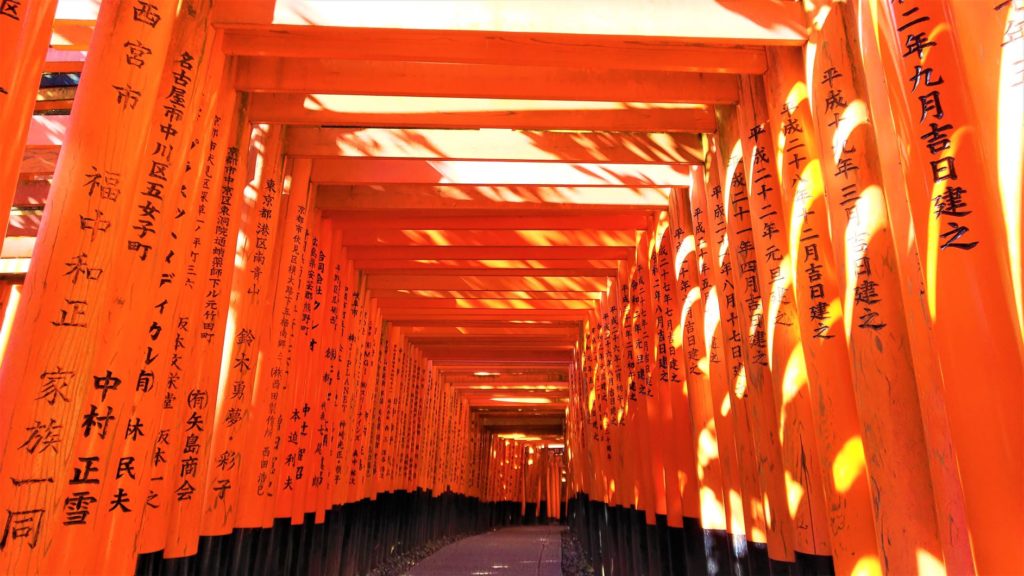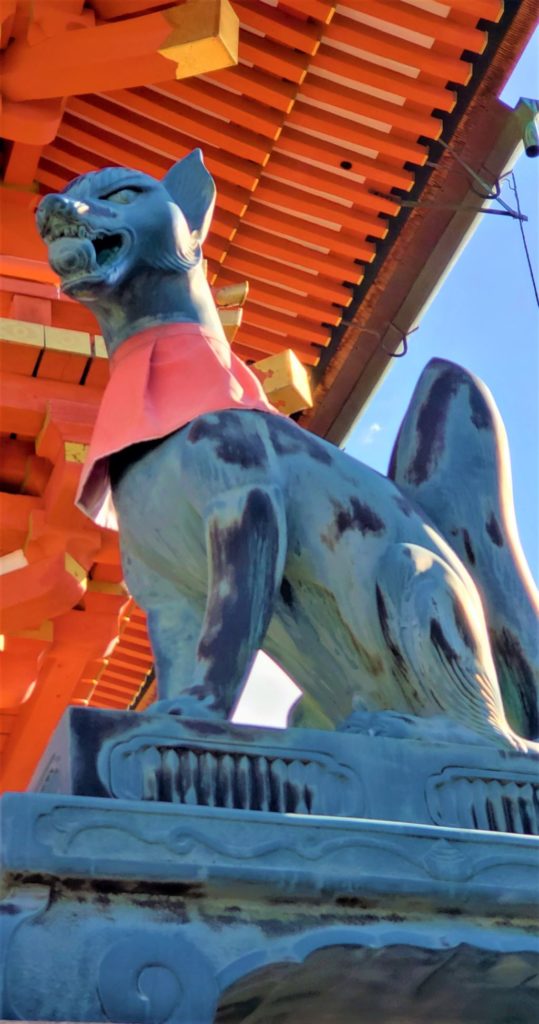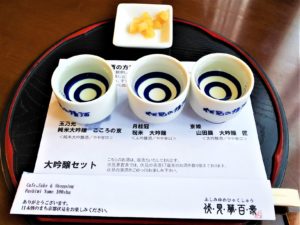Fushimi Inari in Kyoto

The other day I went to Fushimi Inari Grand Shrine, which is located in the southeast part of Kyoto. This is a memorable place because my first tour as a guide about three years ago was here!! Anyway, let me tell you about this shrine now.
Fushimi Inari Grand Shrine is the most popular destination in Japan among foreign tourists. It was founded in the early 8th century and the deity of good harvests is enshrined here.
Later on, with industrialization, the deity of good harvests, Inari, gradually came to be worshipped as the deity of success in business, too. A lot of Japanese people come to this shrine praying for their success in business, especially around New Year’s, when more than 2.5 million people visit hoping for success.

When you are in the shrine, you will see a lot of vermillion gates everywhere in the precincts. Shrine gates are called torii in Japanese. They are a symbol of this shrine.
Torii gates divide the sacred world from the ordinary world, so we are purified by passing through each gate. The color of the torii gates is vermillion. That’s the color to ward off evil spirits and it represents good harvests because vermillion is the color of energy and the sun.

You will also see the fox statues at certain points in the shrine. Foxes are believed to be the messengers of the deity Inari.
Mt. Inari, which is behind the main shrine, is a sacred mountain with divine power. There are more than ten-thousand shrine gates along the paths that go up and down the mountain.
A lot of worshippers donate torii gates when they want to make a wish or after their wishes come true. Most of the donators are companies who pray for the prosperity of their business.
There is so much to see at this unique, must-see place. I always enjoy visiting Fushimi Inari Grand Shrine!!

What a fascinating place! It looks so different from anything in my country.